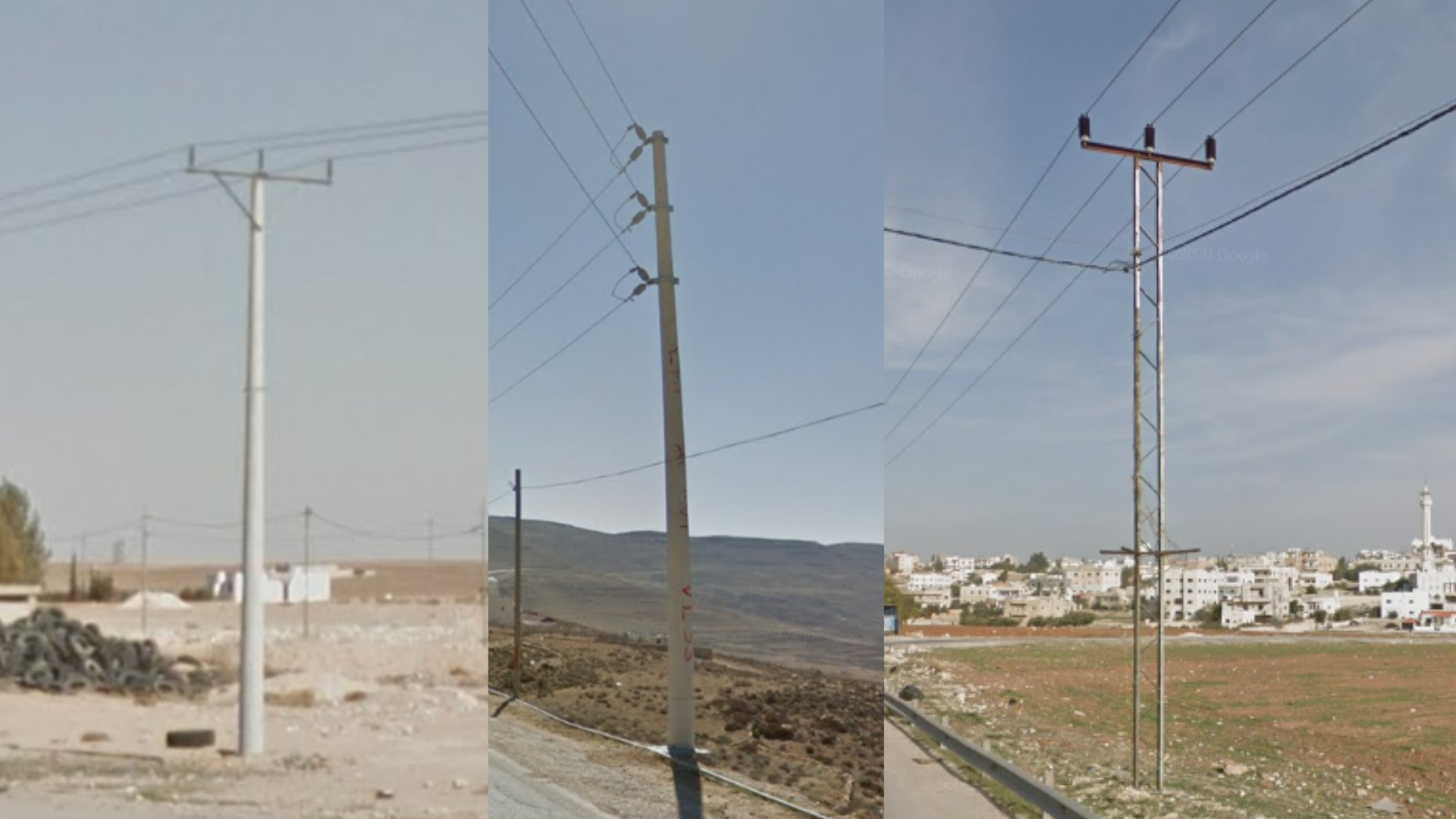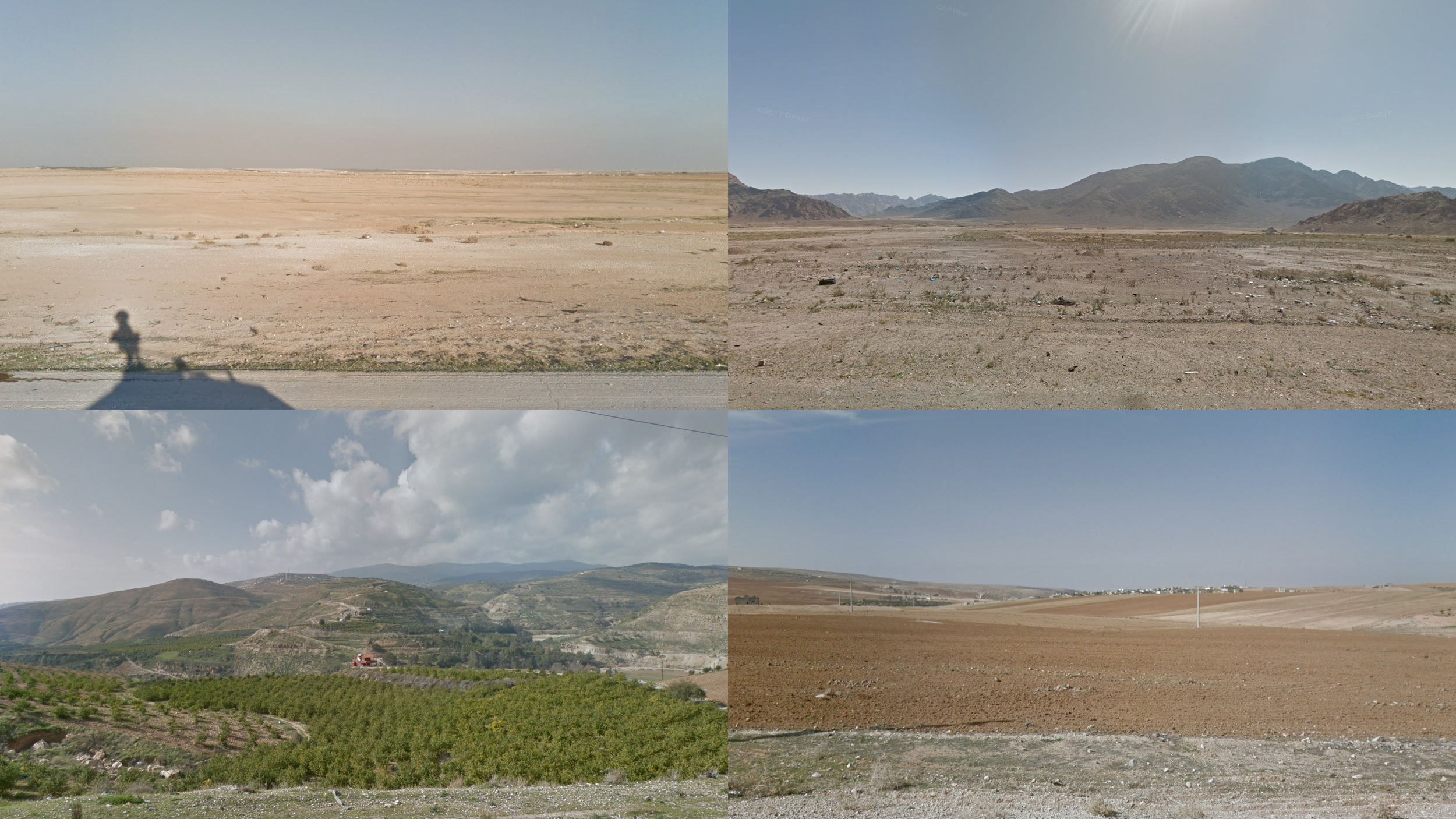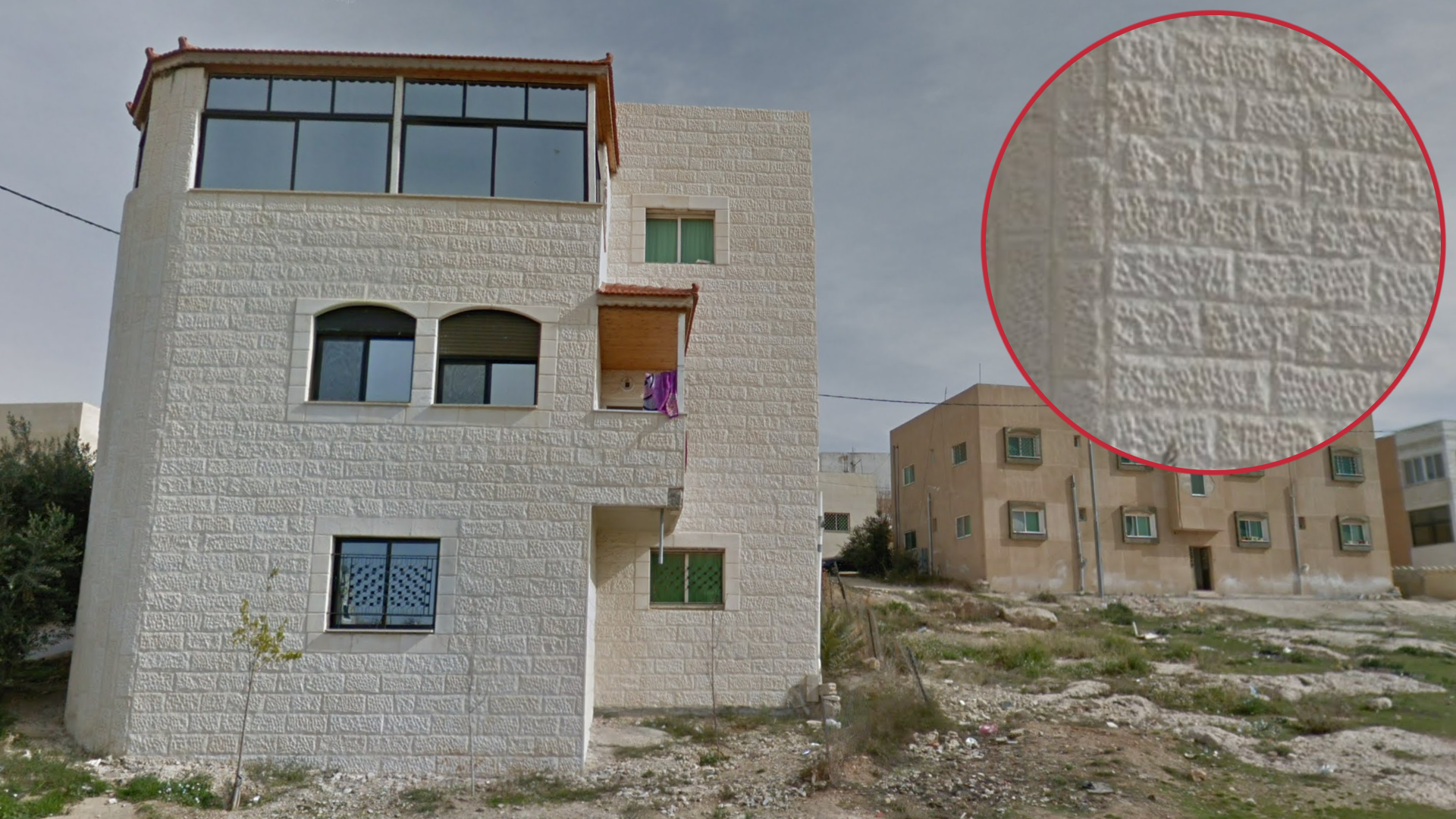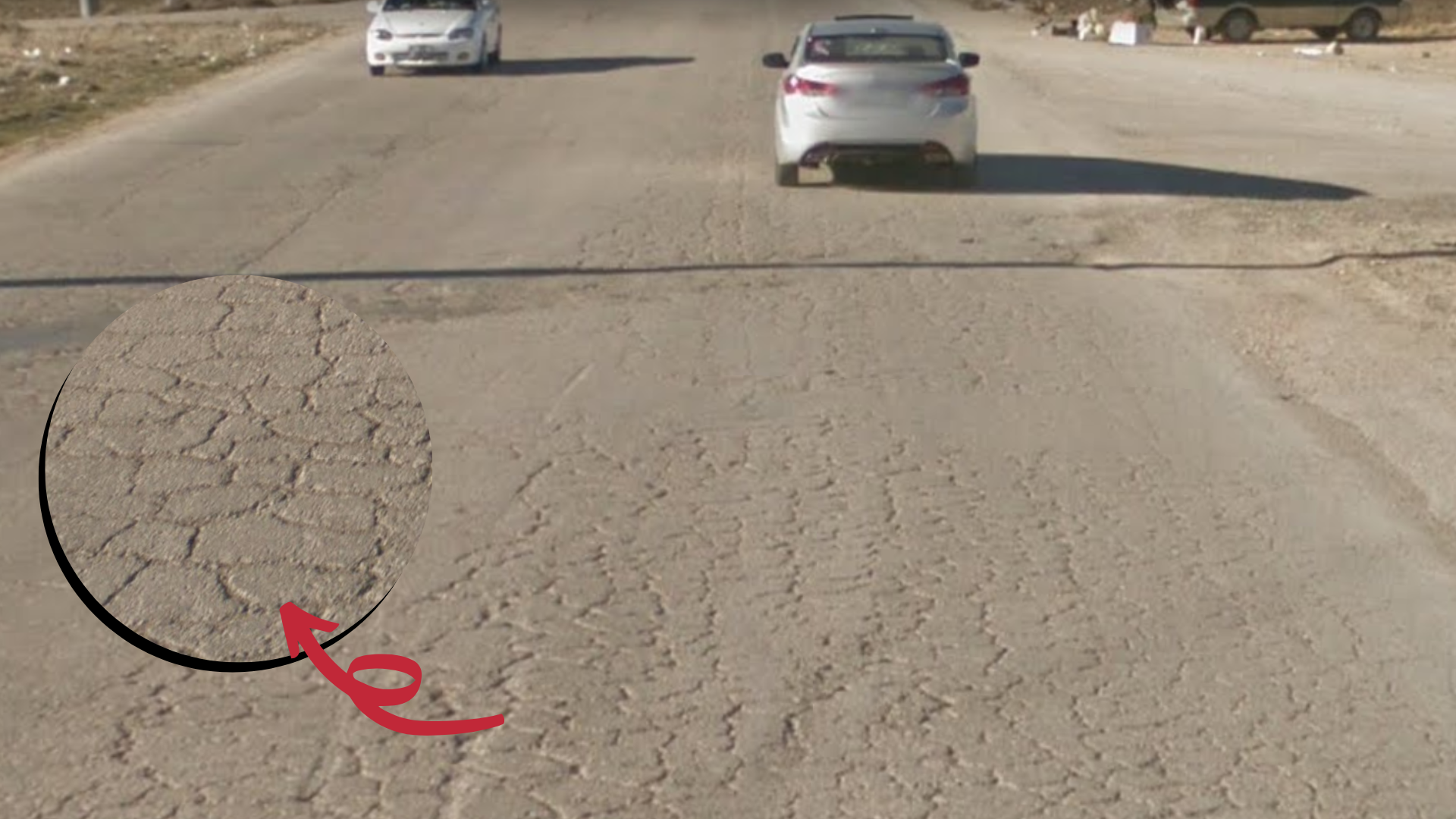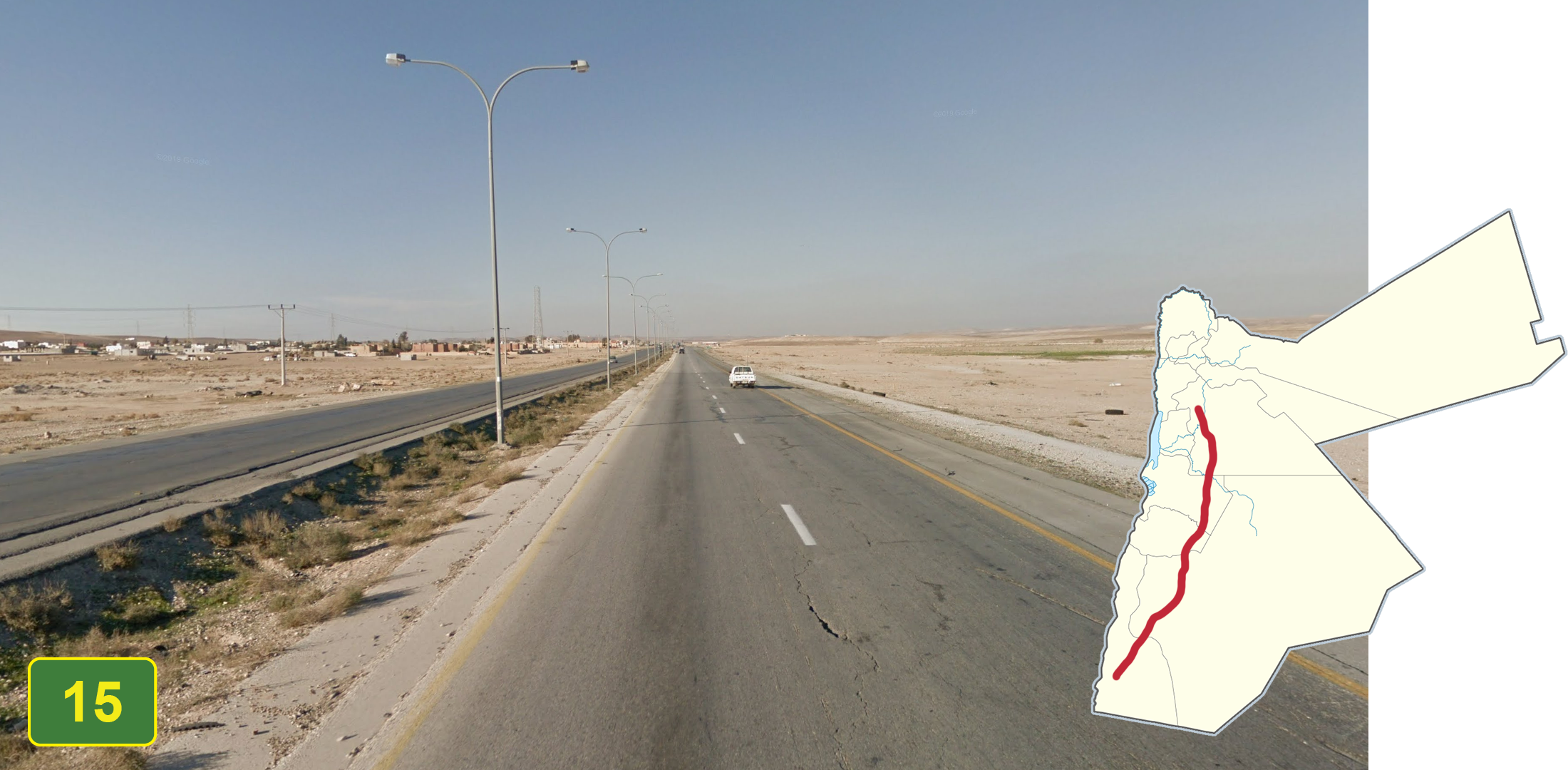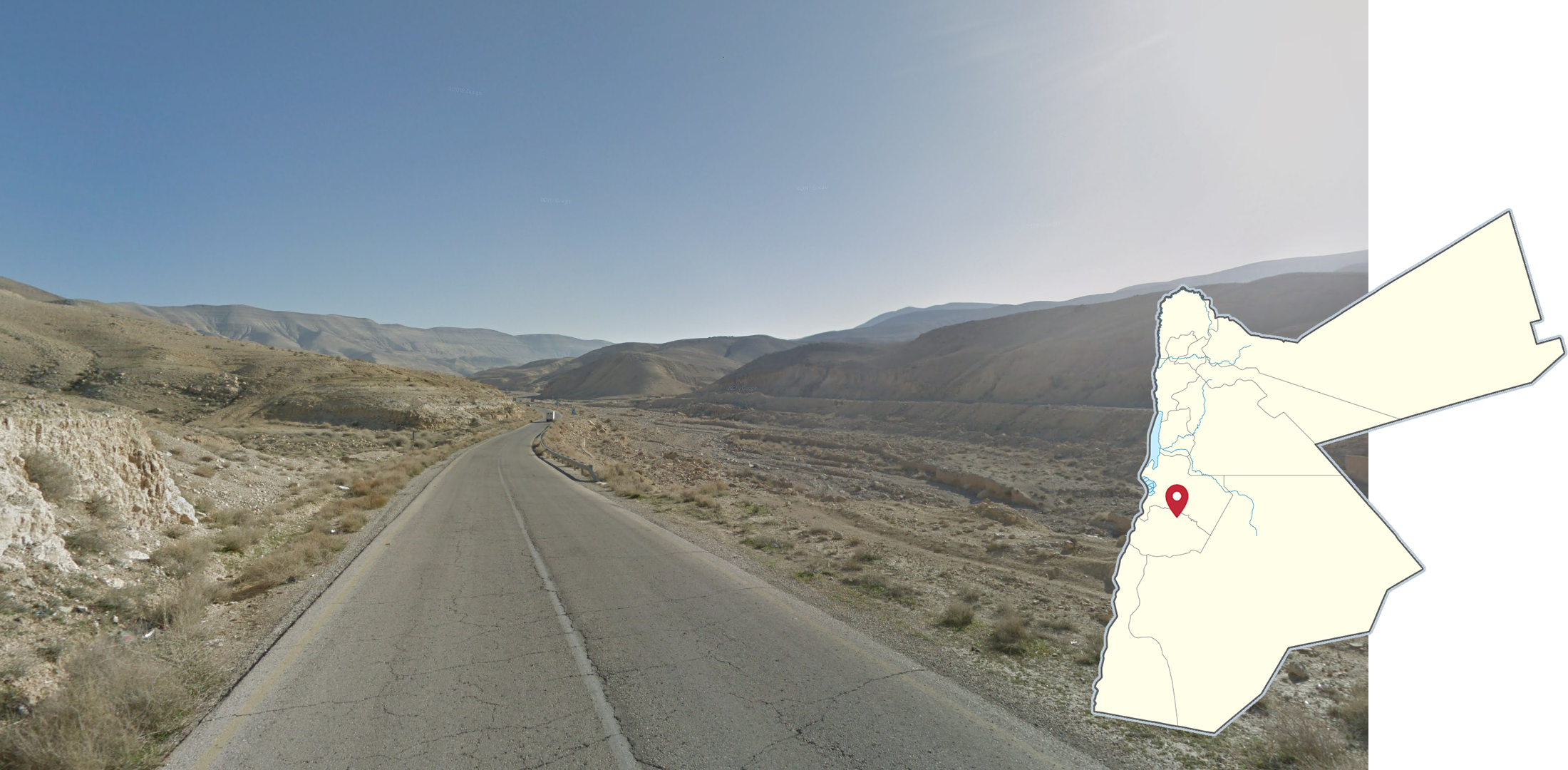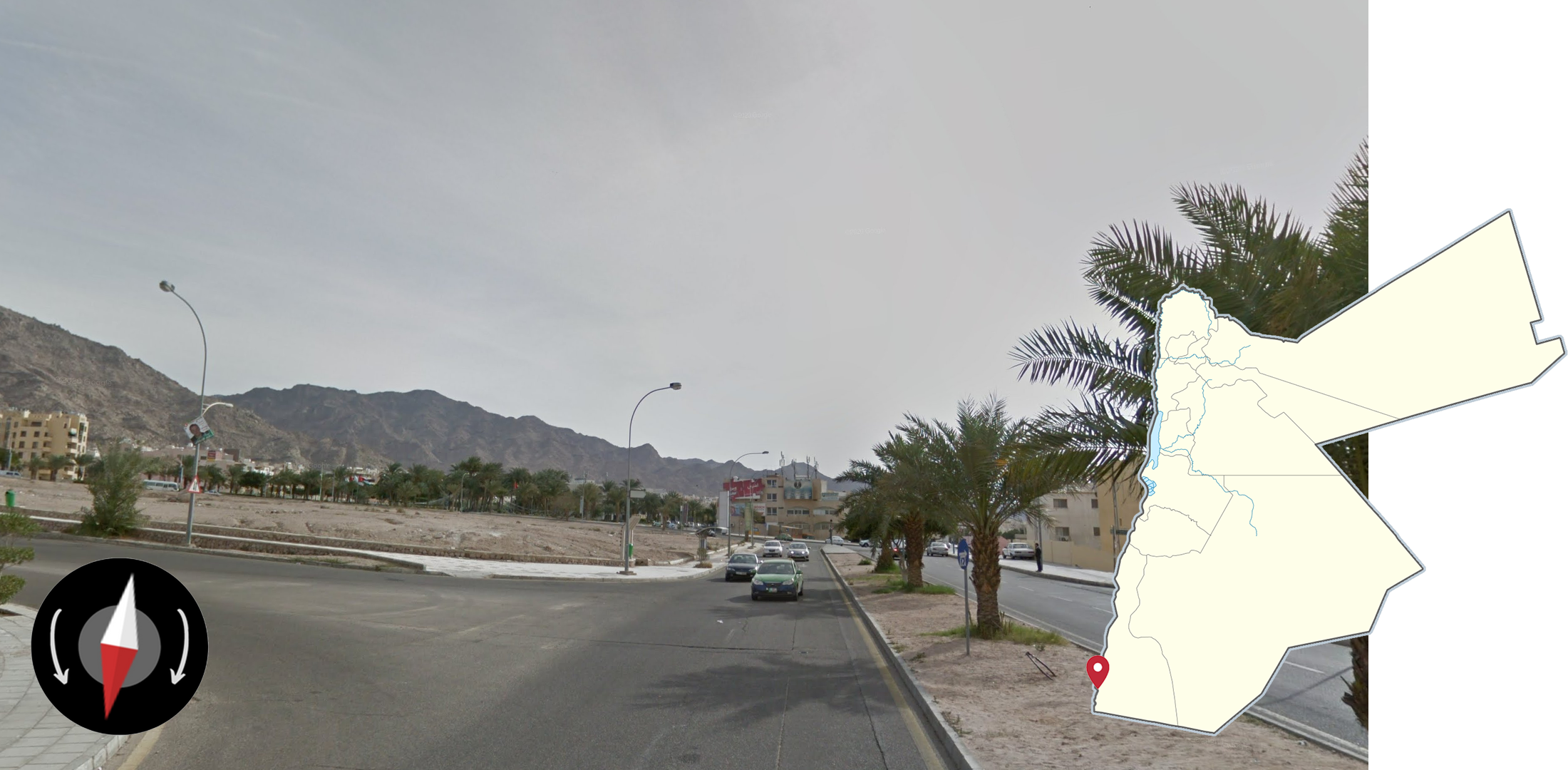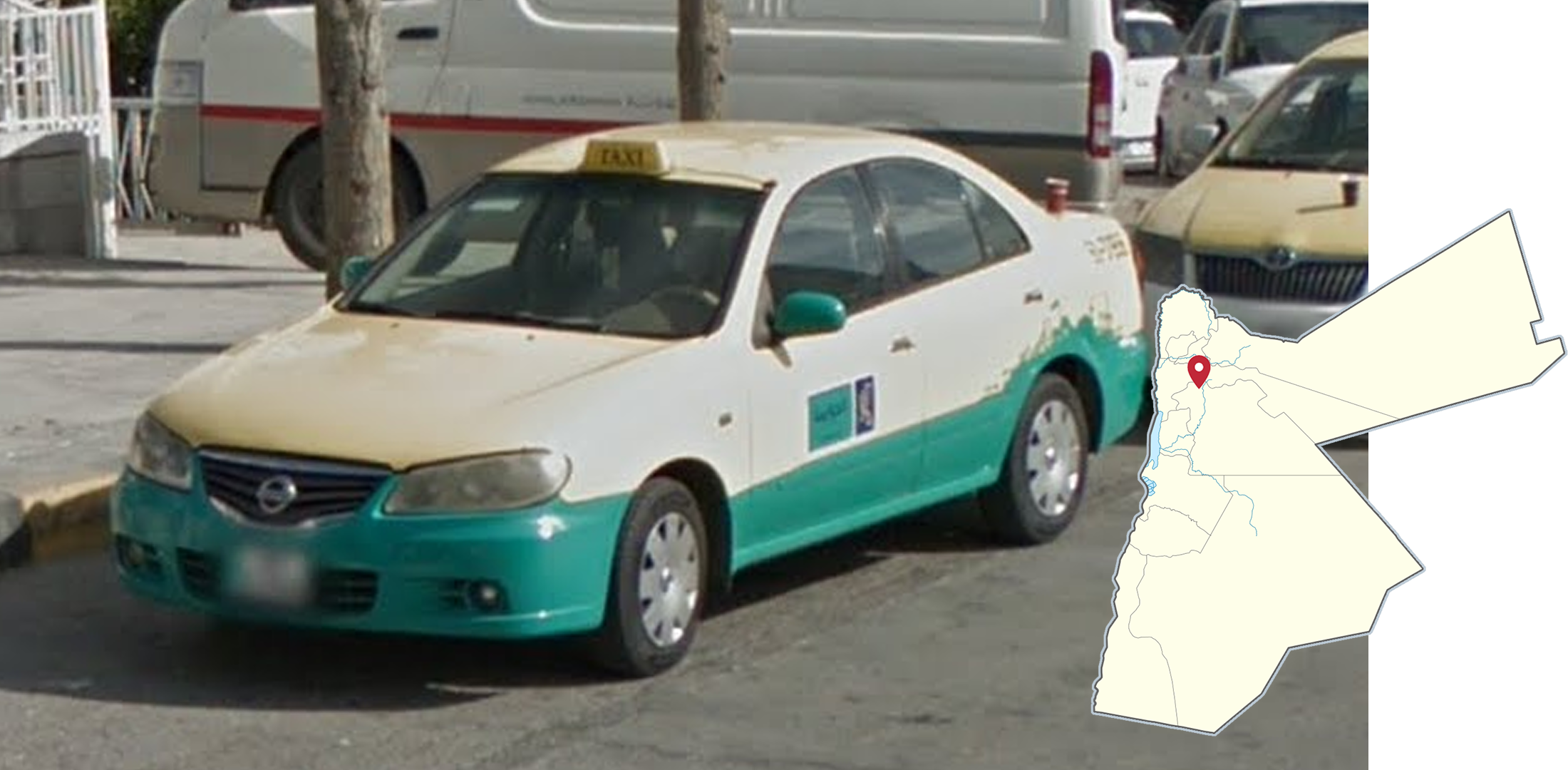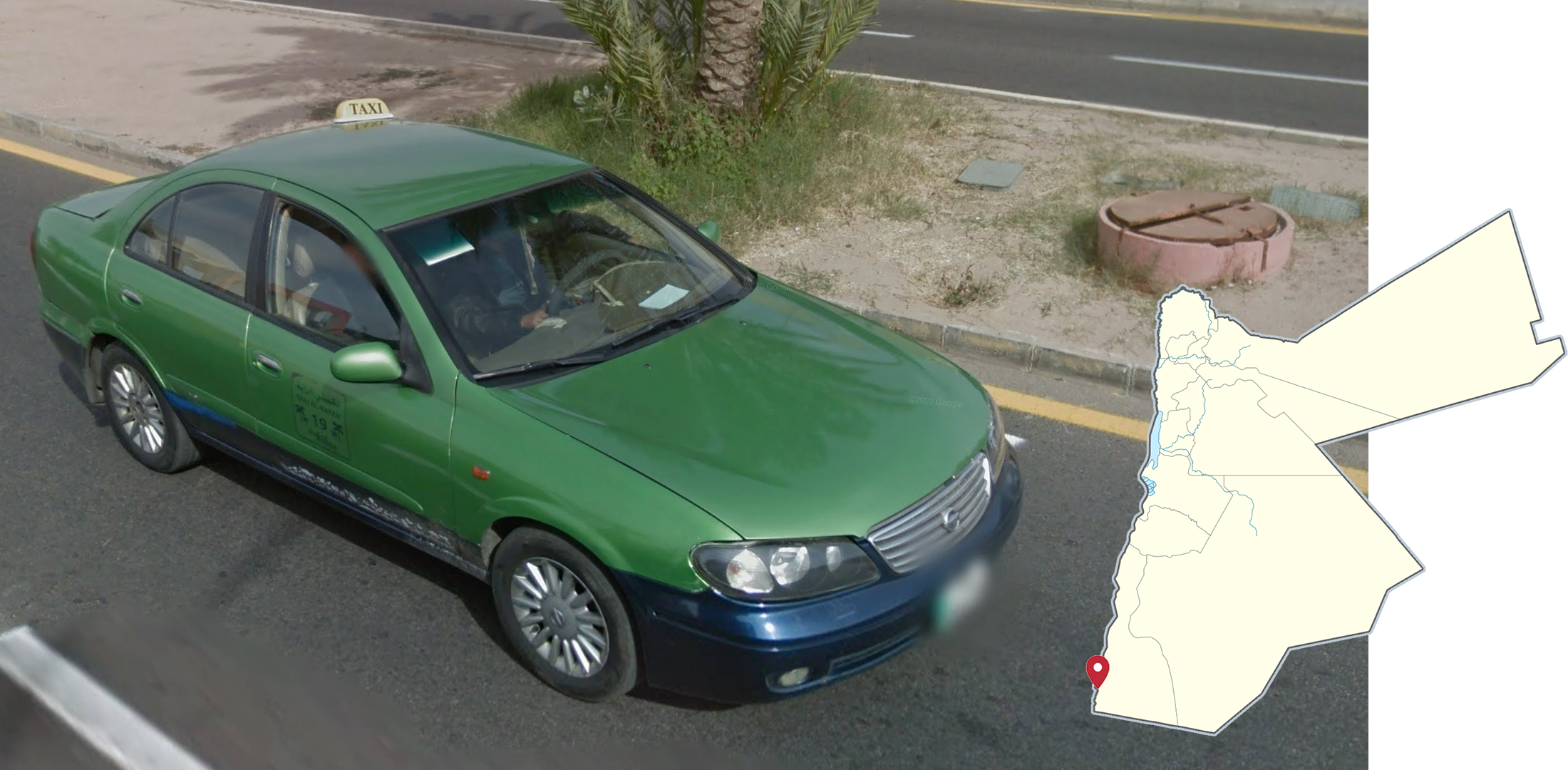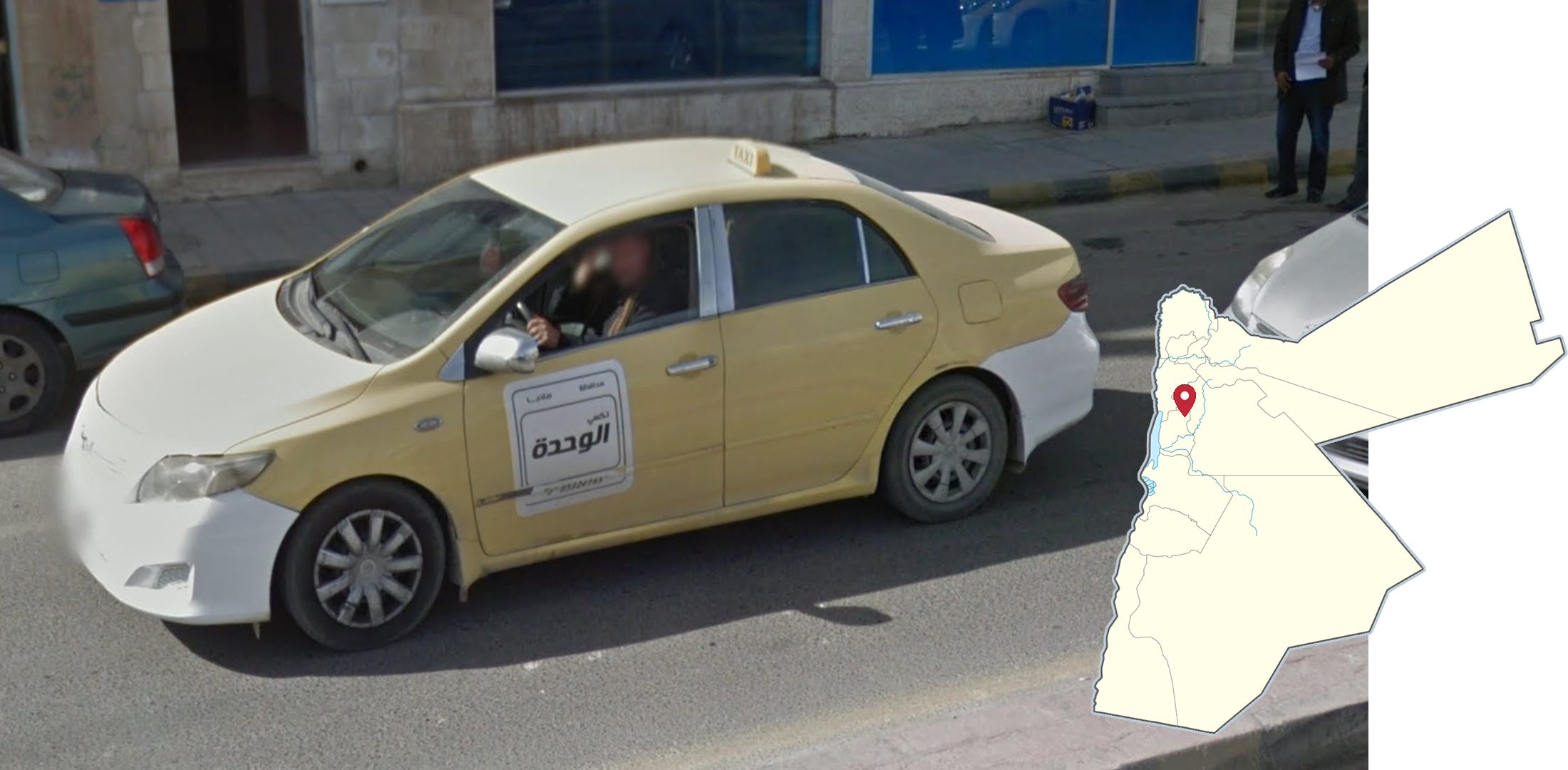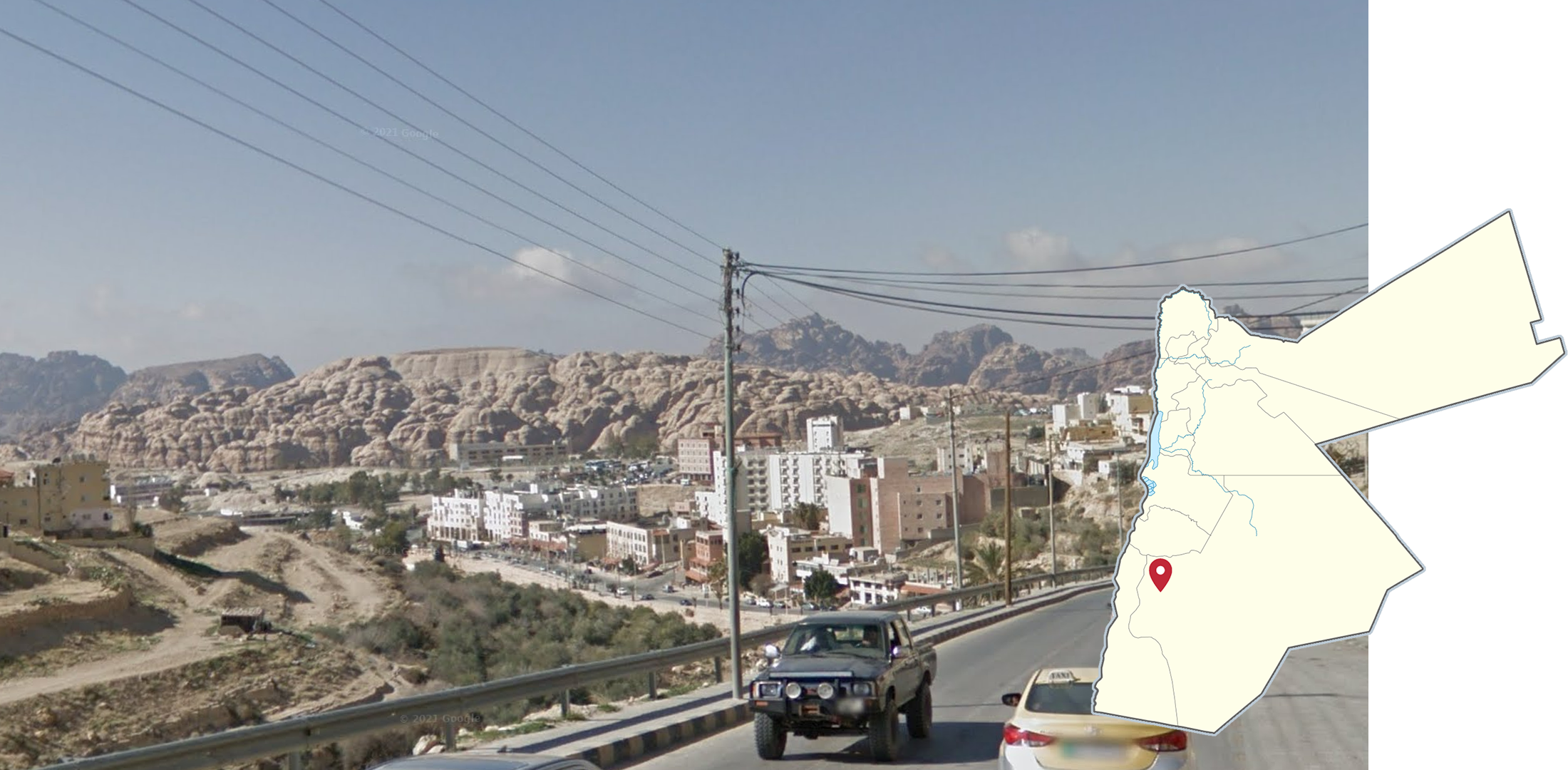
Jordan
Jordanian licence plates are white and can be long or short. Commercial transport vehicles, such as taxis, have a distinctive green strip on the left.
NOTE: In the Middle East, the green strip is only found in Jordan.
The UAE also uses long white plates. Israel however only uses yellow licence plates. In Palestine, both white domestic and yellow Israeli plates are common.
Jordan is a very arid country, with limited vegetation and a lot of almost completely lifeless desert. The lushest parts will still only have the look of an arid Mediterranean landscape.
Most buildings in Jordan are made of bright sandstone bricks and have flat roofs.
NOTE: Similar sandstone bricks are also common in Jerusalem and in the West Bank.
Jordan only has Street View coverage in the far western part of the country. Coverage is limited to bigger towns and main roads in this area.
NOTE: Coverage ends just north of Jerash. Even though Irbid is the second largest city of Jordan, it has zero official coverage. In the south, coverage extends all the way to the coastal town of Aqaba, but not south of it.
Highway 15 is the longest divided highway with coverage in Jordan. Most of the road is surrounded by desert landscape. It is also surrounded by rocky hills in the south closer to Aqaba.
NOTE: Highway 35 north of Madaba and highway 40 west of Amman are also divided but do not feature a desert landscape, while the divided highway 80 in the south runs mainly from east to west, making it distinguishable.
Highway 40 is a recognisable divided road surrounded by low, green shrubbery that makes its way west of Amman through the hilly terrain into the sandy area close to the Dead Sea.
NOTE: Y-shaped lamp posts as shown in the image can be found along the length of highway 40, making it distinguishable from highway 35 north of Amman.
For a large majority of Highway 80 and its turns, this divided valley road is surrounded by large, rigid mountains. When turning onto the stretch of road leading to Aqaba, the mountains level off.
NOTE: The road direction of Highway 80 is east to west, as opposed to Highway 15, which runs north to south.
West of the town of Wadi Musa, a collection of trekkers can be found in and around Petra, a rock-cut city from antiquity. This trekker coverage features highly eroded reddish rocks, narrow gorges, and occasionally groups of tourists crowding around the archaeological sites.
NOTE: While not likely to appear in competitive or pinpointable maps, these trekkers are a mainstay in many maps, including the default World map.







